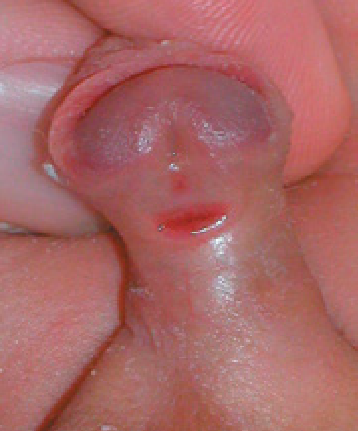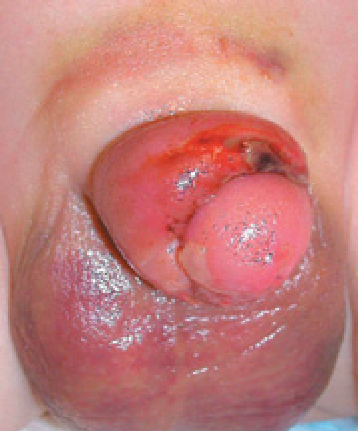Hypospadias is a condition in which a tube, called the urethra, does not reach its normal position at the centre of the tip of the penis. It is often associated with a bend in the penis, called a ‘chordee’, which may only be apparent when the boy has an erection. Almost always part of the foreskin is missing. The condition is a common one and involves about one in 300 boys born in Australia.


Allow the boy when he is older to stand-up and pass urine with a straight stream
Ensure the boy has a straight erection to allow normal intercourse as an adult
To give the penis a more normal appearance A functional and cosmetically satisfactory result can usually be achieved in most boys.
The operation is normally performed as a day-case under general anaesthesia, although occasionally your son may need to be admitted overnight for observation. The operation usually takes between 90 minutes and 3 hours.
PREPARATIONS
ANAESTHESIA
You and your child will meet the anaesthetist on the day of the procedure. After talking to you and briefly examining your child, they will take you through to the operating theatre. One parent is welcome to accompany your child until they are asleep. To put your child to sleep the anaesthetist will use a face mask, or with children 5 years and over there is the option of either face mask or needle (with numbing cream). You will then be shown the waiting room where there is tea, coffee or water available to drink. Once your child is asleep, the anaesthetist will insert a ‘drip’ to allow fluids to be given directly into a vein. Usually this is located in the hand or arm, but occasionally may need to be sited in the leg or scalp. Some antibiotics are given into the drip to help prevent early infection. The anaesthetist will then inject some local anaesthetic to numb the penis. Usually this is injected near the base of the spine near the ‘tail’ bone, termed a ‘Caudal’. Please inform the anaesthetist if you wish to discuss the relative risks and benefits of this procedure.
PROCEDURE
The penis is cleaned with an antiseptic solution. A new urine tube will be created to the tip of the penis, usually using the inner layer of the foreskin. The remains of the foreskin are removed and any bleeding stopped with an electrical cautery instrument. Salty water is temporarily injected into the penis to make sure that it will be straight when erect. The wounds are then closed using a very fine purple or white stitch material that will dissolve slowly over the next 2 to 4 weeks. A fine white plastic tube is inserted into the penis so that urine will trickle out into the nappy after the surgery. This tube is secured with a bright blue stitch. A gauze dressing will cover the penis, held in place with clear plastic film. The local anaesthetic block usually lasts around 6 to 12 hours.
INITIAL RECOVERY
Your child will be taken to the recovery area after the surgery. Once they are awake, you will be called into the recovery ward. Often children appear distressed and a little confused initially – there may be several reasons for this including residual effects of the anaesthetic, hunger, and some discomfort. Generally they will settle quite quickly, especially if offered a drink or feed. The recovery and ward staff are also able to give pain relief medication once your child is awake, and this is sometimes required. The nursing staff will check the wound and make sure you are happy before you go home. Usually this will be about 2 hours after the surgery.
As a result of the local anaesthetic nerve block, your child may complain of a numb sensation in the groin and in some cases some weakness in the leg on the side of the surgery. This is temporary and will generally settle within a day or so of the operation.
POST-OPERATIVE COURSE
Your child should not be bathed for the first 48 hours, but nappies can be changed as required and a ‘wet-wipe’ of similar cloth used. On the second post-operative day (48 hours after surgery) your child should have a bath at home and the dressing removed completely once it has been thoroughly soaked. This process is often made more comfortable by a dose of Painstop one hour before the bath. It is also very important to do this with two adults: one to look after the child and one to remove the dressing. Remember that the penis and scrotum will appear very bruised and swollen at this time. After the bath it is important to apply the tube of topical antibiotic cream (‘Chlorsig’) supplied to the wound 2 times a day for 1 week. In addition, to help prevent the tip of the penis from sticking to underpants or nappies, a thin layer of Vaseline or petroleum jelly is helpful.
Normal bathing is safe from the next day onwards. Often the penis will appear red, swollen and ulcerated in the first few weeks after surgery. This is normal and does not represent infection. The swelling improves considerably after the first few weeks but does not resolve completely for up to one year after surgery.
Your child can begin eating when he gets home. Start with clear liquids (apple juice, iceblocks) and add solid food slowly and in small amounts. Your child may vomit from the anaesthesia on the day of surgery. This should stop by the morning after surgery.
Your child can begin eating when he gets home. Start with clear liquids (apple juice, iceblocks) and add solid food slowly and in small amounts. Your child may vomit from the anaesthesia on the day of surgery. This should stop by the morning after surgery.
RETURN TO ACTIVITY
- You see any signs of infection: redness along the incision site, increased swelling, foul smelling discharge from incision
- Your child’s pain gets worse or is not relieved by painkillers
- There is continuous bleeding (small ooze of blood in the first day or two is normal)
- Your child has a high temperature
- Vomiting continues on the day after surgery
- You have any questions or concerns
Follow up 4-6 weeks after surgery.
Catheter removal
An appointment will be made to see you in the outpatient clinic or rooms to remove the tube in the penis about one week after the surgery. It is helpful to give a dose of ‘Panadol’ one hour before your appointment time. At this visit the tube will be removed by cutting the securing stitch. You should continue antibiotics for a further 24 hours and then stop. If the tube falls out prior to your appointment you should contact the hospital or rooms to arrange a review to make sure that all is well. When your son first passes urine after removal this may be painful. Usually this improves dramatically after the second or third time that they pass urine.
Follow-up
Normally I see you and your child about 4 weeks following surgery. This is both to ensure that the wound has healed and that you and your son are satisfied with the results of the operation. For patients from rural areas, this review may be deferred to your own general practitioner if you prefer. Please ring soon after the operation to book the post operative appointment to arrange a convenient time.
Problems & further surgery
Hypospadias surgery is technically demanding and not all children will achieve an ideal outcome after their first operation. We now know that the skin and tissues of the penis in boys with hypospadias does not heal quite normally even when the surgery appears to have gone well. In about 10% to 20% of cases a leak will occur between the original position of the urethra and its new position near the tip of the penis. This is called a ‘fistula’. Nearly always a further operation will be required to repair this hole and for the best chance of success we generally recommend deferring this operation for a year. Although this second procedure is generally much less painful for your son, there is still a chance (about 20%) that this will not be successful. Another common indication for further surgery may be the presence of any excess skin or bulky scar tissue, best assessed at about one year after the original procedure.
As with any surgical procedure, there is always a 2-3% risk of a wound infection or bleeding after surgery.
